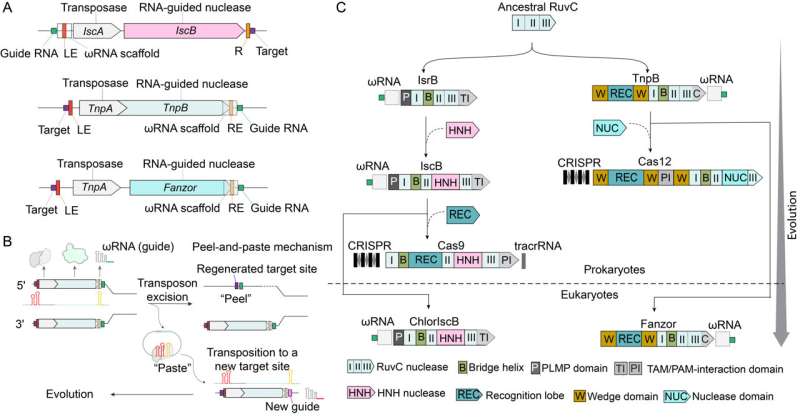This article has been reviewed according to Science X's editorial process and policies. Editors have highlighted the following attributes while ensuring the content's credibility:
fact-checked
peer-reviewed publication
trusted source
proofread
Harnessing compact RNA-guided endonucleases for enhanced genome editing

The review paper "CRISPR Beyond: Harnessing Compact RNA-Guided Endonucleases for Enhanced Genome Editing," authored by Feizuo Wang from National University of Singapore, presents a comprehensive examination of the advancements in CRISPR-Cas technologies. Their collective expertise focuses on addressing a critical bottleneck in the field: the significant size of traditional CRISPR-Cas systems, which poses challenges for efficient delivery into target cells and organisms. This barrier has limited the application of CRISPR technologies in therapeutic contexts, prompting the need for innovative solutions.
The findings are published in the journal Science China Life Sciences.
Central to their review is the exploration of two pioneering strategies designed to circumvent these limitations by developing more compact and efficient genome editing tools. The first involves the utilization of OMEGA (Obligate Mobile Element-guided Activity) systems, and the second, an engineering approach to refine existing CRISPR-Cas systems into smaller, yet equally effective, versions. This dual-focus approach aims not only to overcome existing challenges but also to broaden the scope of CRISPR's application in gene therapy, promising a future of enhanced precision and adaptability in genetic interventions.
Their review underscores the potential of miniaturized CRISPR systems to revolutionize gene therapy by improving the delivery efficiency of gene-editing tools. The implications of their findings extend far beyond the technical aspects, suggesting a pathway to more accessible and effective treatments for a range of genetic conditions.
"The miniaturization of CRISPR-Cas systems represents a pivotal shift in our approach to gene therapy," Dr. Hu says. Through this scholarly work, the authors not only navigate the complexities and innovations within the realm of CRISPR technology but also chart a course for future research and application. Their analysis is poised to inspire ongoing advancements in the field, driving forward the potential for CRISPR to address unmet needs in medical treatment and genetic research.
"CRISPR Beyond" serves as a key resource for researchers and practitioners alike, providing a critical overview of the latest advancements in CRISPR technology with an eye towards practical applications. As the scientific community continues to explore and expand the capabilities of CRISPR-based therapies, the insights offered by Wang and team will undoubtedly influence the trajectory of gene editing technologies, marking a significant contribution to the field's ongoing evolution towards more efficient and adaptable genetic interventions.
Their review heralds a new chapter in the CRISPR narrative, one that is characterized by innovation, collaboration, and a shared vision for the future of genetic medicine.
More information: Feizuo Wang et al, CRISPR beyond: harnessing compact RNA-guided endonucleases for enhanced genome editing, Science China Life Sciences (2024). DOI: 10.1007/s11427-023-2566-8
Journal information: Science China Life Sciences
Provided by Science China Press




















